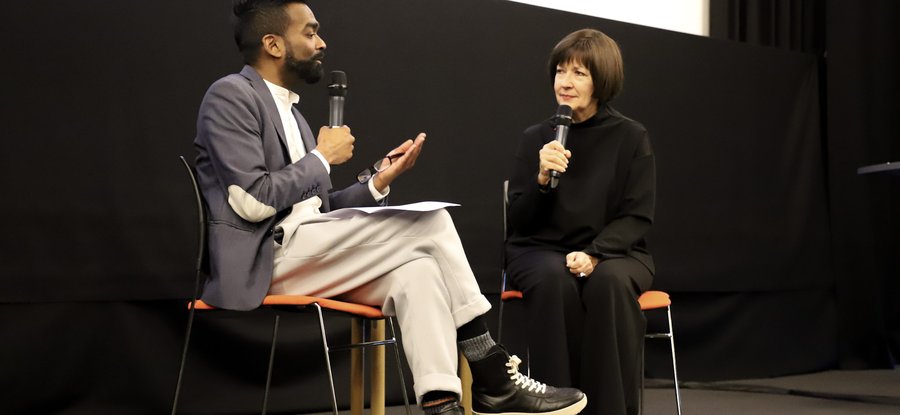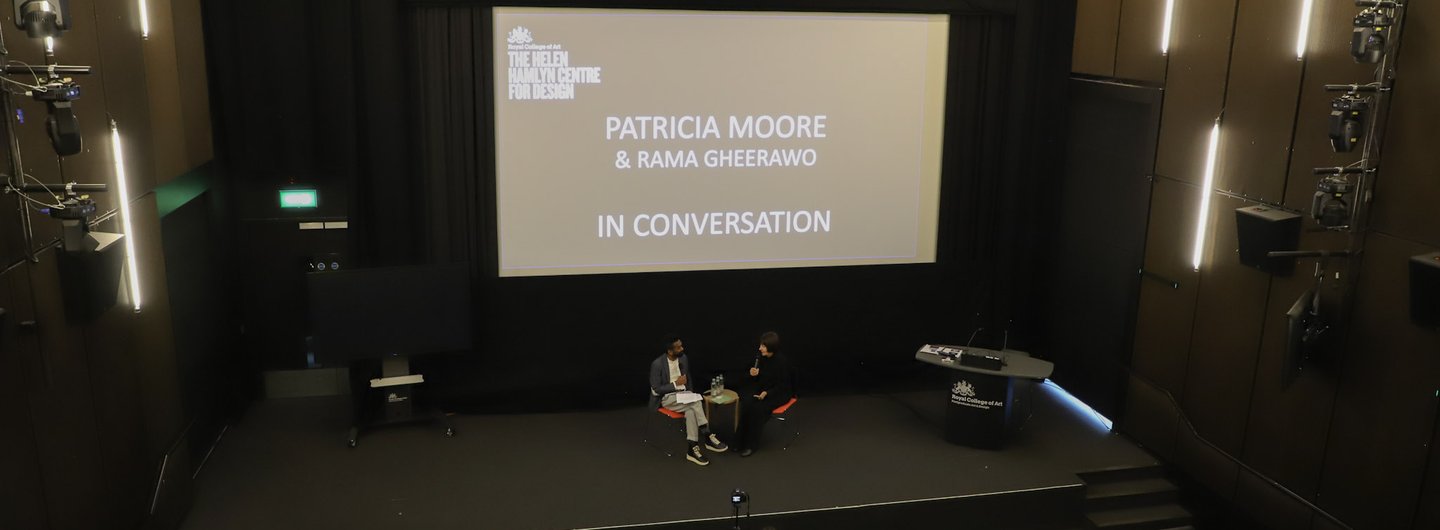
Key details
Date
- 13 June 2023
Author
- RCA
Read time
- 3 minutes
In March, the 2023 Design.Different season of events kicked off with Design.Inclusive, featuring world renowned designer and unwavering champion of inclusivity, Patricia Moore.
“Design empowers us. Design makes us independent. Design makes us able, or it doesn't. And when it doesn't, it's not Design. It's Design failure. It's not inclusive. It's exclusive.” So says Patricia Moore, the world-renowned designer and champion of inclusivity, who spoke at the RCA earlier this year to kick off the 2023 Design.Different season of events.
As a leading authority on consumer behaviour and needs, Patricia’s accolades are many, ranging from Cooper Hewitt’s prestigious National Design Award as 2019’s Design Mind to The Centre for Health Design’s 2020 Changemaker Award. Most recently, the World Design Organisation selected her for the World Design Medal, which will be presented at the 2023 World Design Congress in Tokyo.
But it was not about any of that that Patricia spoke in her conversation with The Helen Hamlyn Centre for Design Director, Rama Gheerawo. Instead, she shared the experiences from across her fifty-year career that have helped to shape her as a designer, and the wisdom she has gained along the way.
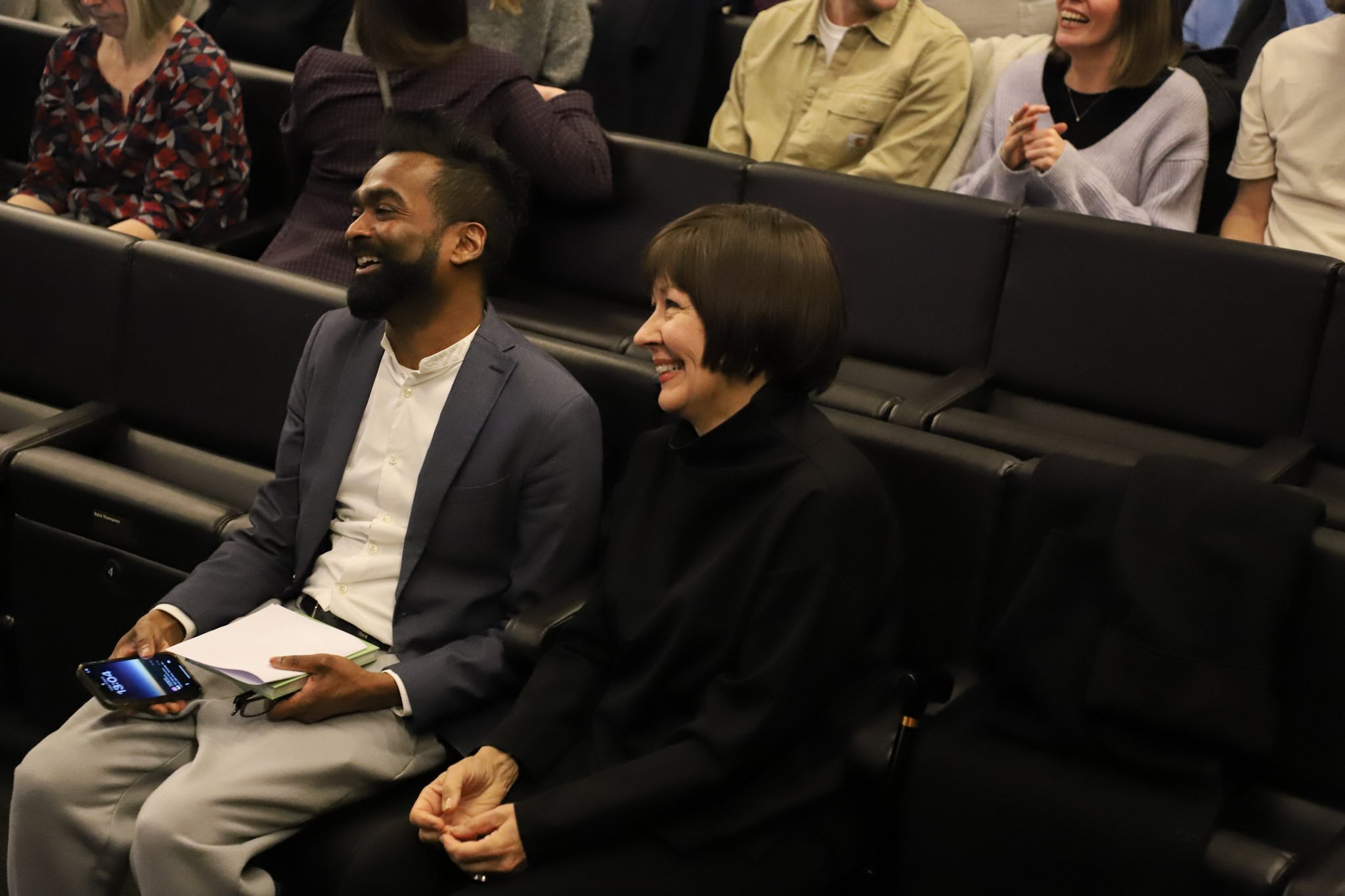
At 26, as the only female product designer at Raymond Loewy’s New York City offices, Moore was unhappy with the lack of regard for the elderly, or, in her words “the disregard for people with arthritis, or low vision, or those who ambulated with wheels ,instead of one foot in front of the other.” So she decided to take matters into her own hands.
After meeting a makeup artist at a party and recruiting them to make her look like a woman in her eighties, Patricia spent nearly four years travelling across the United States in the guise of elderly women from a range of different social backgrounds and classes, in order to experience what life was like for a person of that age. Her disguises ranged from an elderly homeless woman, to one of a middle income, for which she wore her grandmothers’ clothes, to, in her words, ‘a Nancy Reagan type character,’ replete with a limo and maid.
What she discovered was how little involvement or voice was afforded to women over a certain age, even in conversations that directly impacted them. She attended a conference of architects that purported to be designing the best housing options for the elderly, and was struck by how unnoticed, and even ignored, she was. “No one at the conference spoke to me,” she said. “It struck me, why were we not including our elders in the conversation of design?”
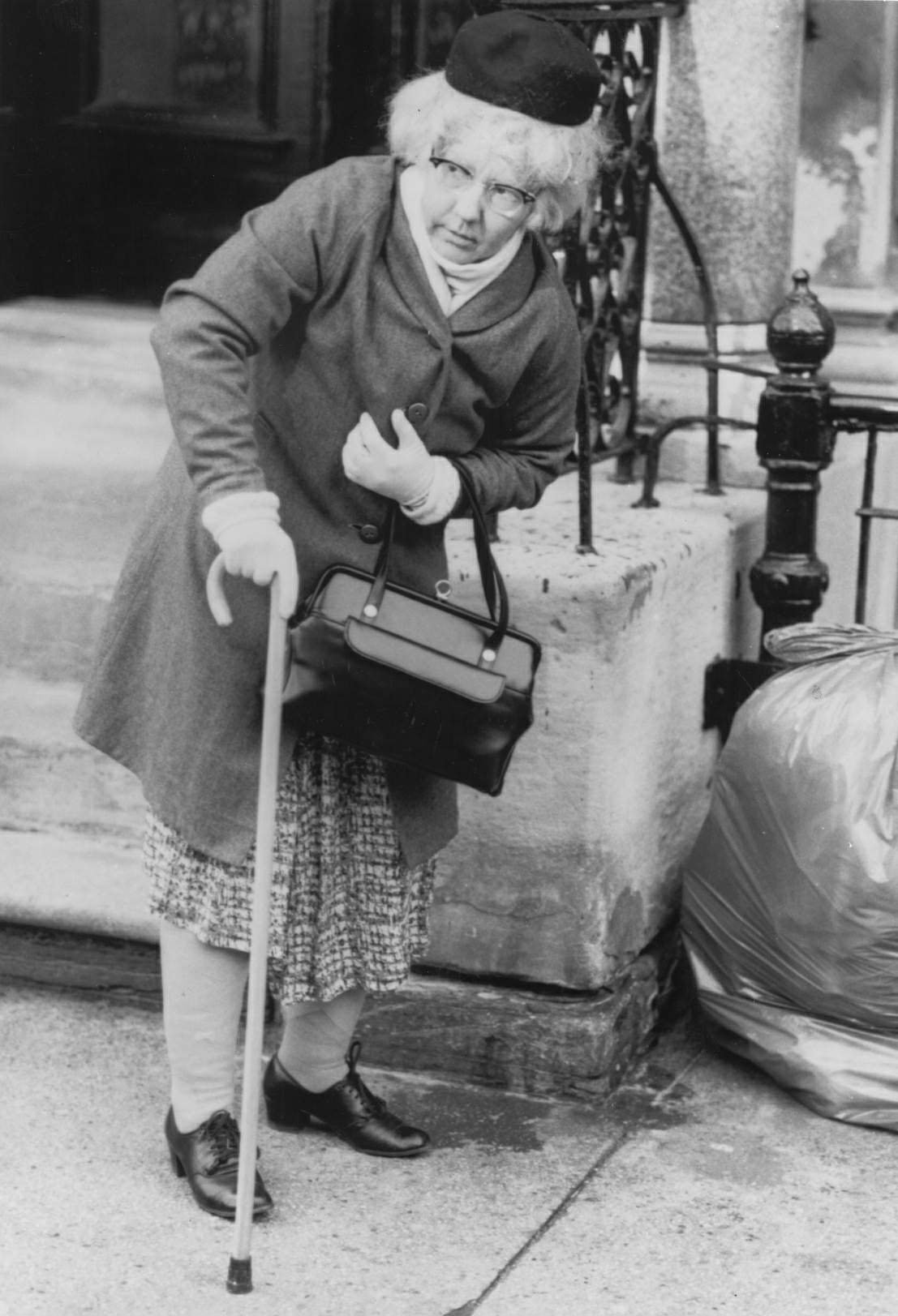
Putting people at the heart of design was a main tenet of Pattie’s conversation. She recounted her experience of travelling across America, and putting designers and politicians in situations that made them realise the negative impact of design failure for those with limited abilities – like confining a group of governors to wheelchairs.
“I was hired to meet with the governors of all fifty states and teach them about inclusivity. Out came the wheelchairs, and I could see them all glancing at each other. They were all invited to take a seat, and not allowed out of the chairs for the rest of the day, not even to get into the restroom – which was not accessible for wheelchairs! They were pleading with me to allow them into the facilities, but sometimes you have to be harsh. This was before the introduction of the Americans with Disabilities Act, so I wanted them to see how difficult life was for those in wheelchairs. And, point made!”
She shared similar experiences of giving designers foggy contact lenses or taping their hands to mimic the effects of arthritis, in order to demonstrate to them the flaws in their designs. “As soon as they had experienced the problems in the designs themselves, they wanted to fix them,” she said. She extolled the need for connecting with people on a human level and approaching design challenges with empathy, noting sometimes being a little firm can go a long way. “People tend to shrug off their humanity when they enter the boardroom,” she explained. “Something as simple as making everyone sit in wheelchairs reminds them that we’re all deserving of attention and respect.”
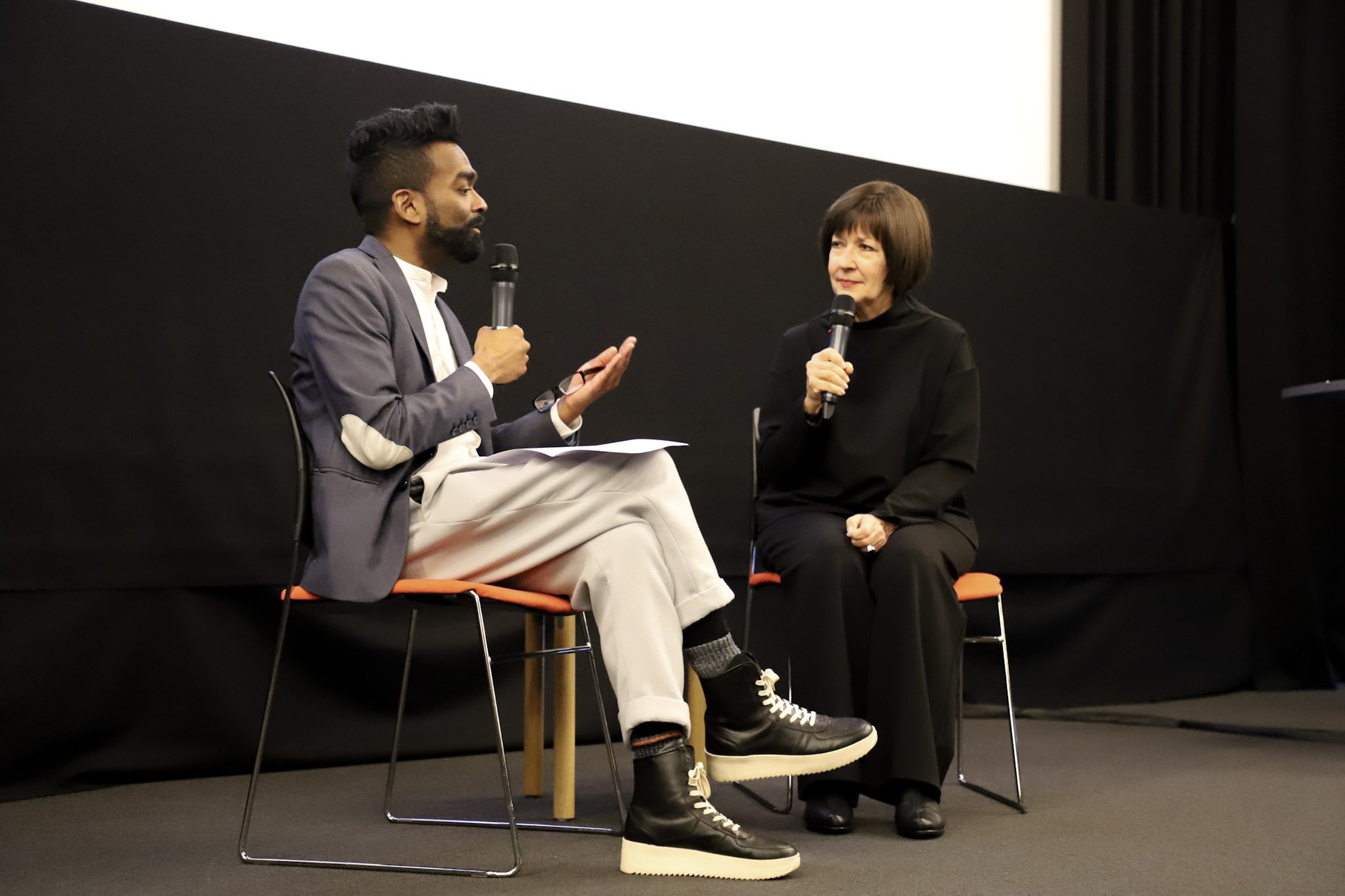
Inclusive design is not just about designing for a specific group of people, but rather designing with everyone in mind. It's about creating products, services, and spaces that are accessible, intuitive, and enjoyable for all users, regardless of age, ability, or background.
“I think inclusive design is Design that everyone can use with equity. If any of us can't use a Design, then it is exclusive, pure and simple. Like snowflakes, no two of us are alike in our wishes, wants and needs. Our uniqueness is the one thing that makes us all the same. We are all beautiful beings worthy of the dream, the goal of inclusivity by Design.”
